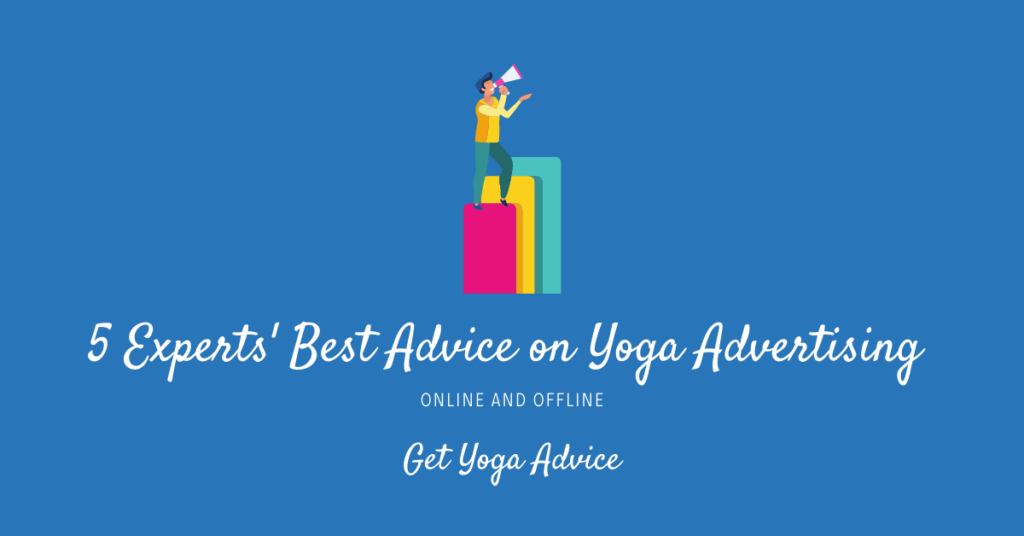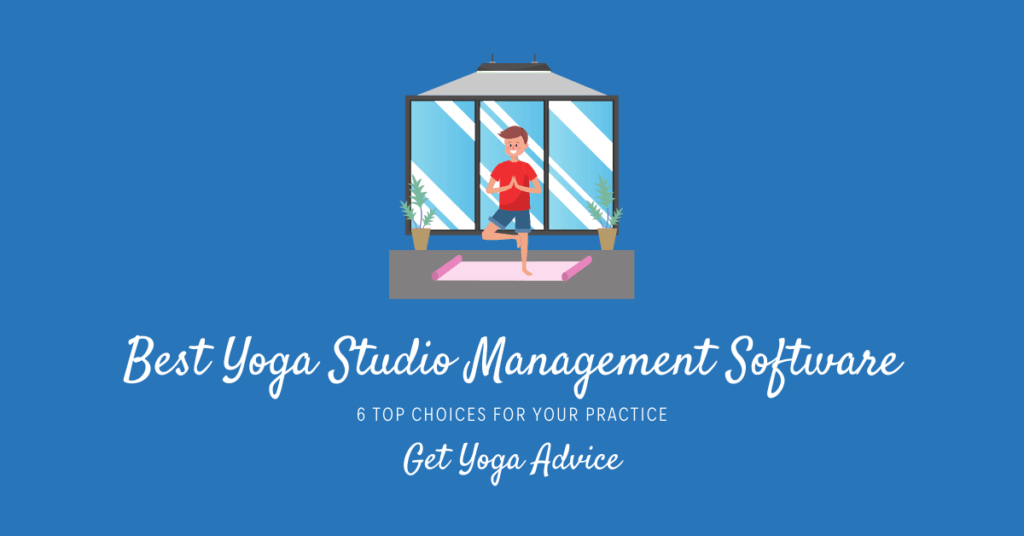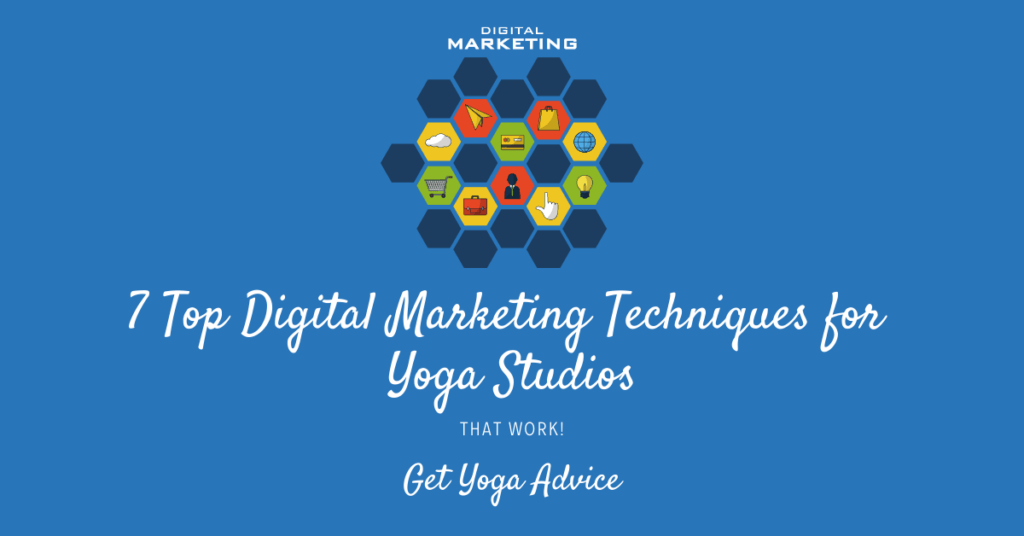As a yoga instructor, there are many approaches to integrating online and offline marketing into your yoga advertising campaign. How they work together is essential in figuring out which approach has the biggest impact for reaching any potential yoga students and online sales.
Every industry is different, and content marketing through a Google ad might work for a potential customer in another industry, but it might not work for the target audience in yoga marketing. Here are five pieces of advice from the experts on how to manage an effective marketing strategy using online and offline marketing for yoga advertising.
- 1. Don’t Underestimate Word of Mouth Advertising
- 2. Offline Marketing is Ideal for Hyper-Local Markets
- 3. Good Campaigns Tie Print and Digital Marketing Together
- 4. Keep Offline Marketing that Works, But Moving Into Online Advertising is Essential
- 5. There is More Than One Reason Why You Might Eventually Move Away From Offline Advertising
- Examples of Online Advertising
- Examples of Offline Advertising
- Final Word on Yoga Advertising
Contents
- 1 1. Don’t Underestimate Word of Mouth Advertising
- 2 2. Offline Marketing is Ideal for Hyper-Local Markets
- 3 3. Good Campaigns Tie Print and Digital Marketing Together
- 4 4. Keep Offline Marketing that Works, But Moving Into Online Advertising is Essential
- 5 5. There is More Than One Reason Why You Might Eventually Move Away From Offline Advertising
- 6 Examples of Online Advertising
- 7 Examples of Offline Advertising
- 8 Final Word on Yoga Advertising
1. Don’t Underestimate Word of Mouth Advertising
In an article from Entrepreneur, Chris Laird, the head of Procter & Gamble’s in-house marketing organization for word-of-mouth advertising, commented that giving your customers something to talk about will get your name out there. This can be done using both online and offline means.
Social media is a great way to drive conversation and engage with current and potential clients as a yoga teacher, but most people act on offline conversations about brands.
If someone is talking about your yoga workshops to their friends and family, it’s usually because they absolutely loved it and want to share their experience, or they hated it and want to warn people to stay away.
Do your best to get people talking about you in a good way. It’s the best way to get people talking about your yoga practice and bring in more curious customers.
2. Offline Marketing is Ideal for Hyper-Local Markets

Advertising experts have a lot of opinions about online and offline or print advertising, but print is one way to cut through the digital noise, especially in a hyper-local market.
Think about how special you feel when you get a handwritten card or letter in the mail. It’s a much warmer feeling than an email, right?
Think of offline ads the same way. Whether you’re taking out an ad in the local alt-weekly or a city-based magazine or using direct mailers to try to draw attention to your local yoga studio. When done the right way, offline marketing cuts through the online noise to make an immediate impression.
If you’re opening a small yoga studio and hoping to attract local customers, offline ads are a great way to go. Online marketing can help you scale up and attract business from nearby towns, but if your target market is small and lives within the same general area, offline advertising reaches exactly the right audience.
3. Good Campaigns Tie Print and Digital Marketing Together
For maximum impact, some experts suggest tying your online and offline advertising together.
Print ads should complement your online efforts, trying to get readers to engage with your yoga business online. Maybe they’ll see your yoga website in a print ad and visit to learn more about class times or memberships.
Potential clients might take a look at your studio’s Instagram to get an idea of what classes look like or visit your Facebook page to find out what other students are saying.
4. Keep Offline Marketing that Works, But Moving Into Online Advertising is Essential
According to B2C, because small to medium-sized businesses don’t have a huge budget to spend on advertising, they should stick with what works.
If you’ve been doing offline advertising and it’s improved your business’s bottom line, stick with it. There is no reason to stop offline advertising and move everything online.
That said, if you’re planning to grow or expand your business beyond your local area, you will need an online strategy eventually, so it’s something to think about now.
5. There is More Than One Reason Why You Might Eventually Move Away From Offline Advertising

Some experts believe that print ads will either disappear or become completely integrated with digital. As our smartwatches, smartphones, and tablets all become more integrated with one another and screens become more dynamic, print ads will become harder to integrate.
Practically, there are other reasons to avoid offline ads. They’re expensive, difficult to change or alter, and can quickly become outdated and wasteful. The second you settle on a print ad, it’s frozen in time, though everything around it keeps changing.
Print magazines and newspapers are already going out of fashion, and that’s a trend that’s likely going to continue.
Examples of Online Advertising
If you’re looking for some ideas for how to market your yoga studio online, here are some of the most popular options.
Email Marketing
A lot of people prefer social media marketing to emails, but email marketing has a lot of benefits if you do it right.
The first thing you have to do is build an email list. There are a lot of ways to do this. You can have current students provide their email addresses when signing up for class, have a subscription sign-up on your website, or ask for email addresses on your business’s Facebook page.
Don’t reach out with only obvious marketing ploys. Send valuable information that they’ll genuinely like reading so they stay subscribed.
If you have time, a monthly or weekly newsletter is a great way to stay in touch. It gives you a good way to share things relevant to your studio, like new classes, a new instructor, or a special deal, but you can also mix in links to relevant articles or blogs, healthy recipes, or wellness tips.
Search Engine Optimization (SEO)
SEO is key to growing any business online, but for your yoga studio, you’ll have to focus on local SEO. Think how many times you’ve Googled the nearest pizza delivery. Local searches get local results, and you should aim to appear at the top of the Google results.
There are a few ways to rank in local searches. Localize your studio first to tell Google that your studio is close by. Include basic details about your studio on the website, including the phone number and address.
Try to get local bloggers or newspapers to link to your site to make it more relevant, and make sure your reviews are clearly posted on your website.
SEO is organic and free, but it takes a lot of time to get it working correctly, and you constantly have to update and change things to stay relevant.
Content Marketing

Content marketing is the best way to take advantage of organic SEO, and the best way to do it is with a blog post every few days.
There are so many topics to cover about yoga, you’ll never run out of ideas. You can write about good music to use for a yoga class, the many different types of yoga, famous yogis, the history of the types of yoga practiced in your studio.
You can also add posts with videos of you or your instructors demonstrating poses or give a tour of the studio to try to attract new business.
Pay-Per-Click (PPC)
This approach to paid ads is pretty self-explanatory. Every time someone clicks on your ad, you pay. If no one clicks on it, you don’t. When you set up your Google ad, you bid on keywords, so take your time and think about those that really represent your business.
PPC gives you results a lot faster than SEO, but it can be a lot more expensive, depending on what keywords you bid on and how much you’re willing to budget.
Social Media Marketing
Social media marketing is the most common form of online marketing. If you don’t have time to write a blog, you need a Facebook, Twitter, and Instagram profile, at a minimum.
Social media marketing takes a lot of work. You have to continually engage with your followers and grow a large community on your favorite social media channel.
Facebook and Instagram also offer a simple, targeted way to advertise, which comes in really handy if you’re trying to reach out to locals. Use a variety of photos to attract attention in Facebook advertising so people don’t just keep scrolling by.
A Facebook ad targeted to your neighborhood can be extremely effective, especially if you use Facebook Pixel on your website to track ads and make changes.
Examples of Offline Advertising
If you want to integrate some offline ads into your campaign, here are some of the most popular ideas.
Print Marketing
Even if you have social media profiles and a website, there are still some print marketing materials that are useful to have. Brochures explaining your classes, signs, and banners in the studio to build your brand, and business cards to hand out at community events.
Event Marketing

This is a great way to attract new customers, especially in a local business. Host open houses at the studio, give out coupons or discounts to sign up for classes and let everyone see what you’re all about.
You can center the night around a free yoga class to show people what they can expect if they come back, or make it a little more casual and let people walk in to explore the studio space, introduce yourself, and answer any questions they may have.
If you have a relationship with any local influencers, ask them to make an appearance to attract a bigger crowd.
TV and Radio Ads
You might think that everyone is watching streaming services or listening to podcasts and Spotify in their cars, but there are plenty of people who watch broadcast TV and listen to local radio stations on their way to work in the morning. Maybe not as many as there were a decade ago, but they’re still an audience worth reaching out to.
These are admittedly a little more expensive than a lot of the other paid advertising, but they’re very effective. TV ads are an easy way to reach a broader audience, so if you’re trying to reach out beyond your neighborhood, it’s a good way to go.
Radio ads during morning or afternoon rush hour can be effective for people who listen to local channels.
A TV ad campaign can be expensive, and it has to be done right. But they reach a wide range of potential customers, including people of all age groups, ethnicities, and genders. A catchy jingle or slogan can go a long way with your target audience.
As for radio, the type of station you choose will determine the lookalike audience you’re reaching. For a younger audience, try placing ads on a sports station or a popular FM music station. For an older audience, try news or easy listening.
Final Word on Yoga Advertising
An effective marketing campaign for any business should involve both online and offline marketing, but you do have to consider the specifics of yoga advertising. What works for one industry doesn’t necessarily work for all.



